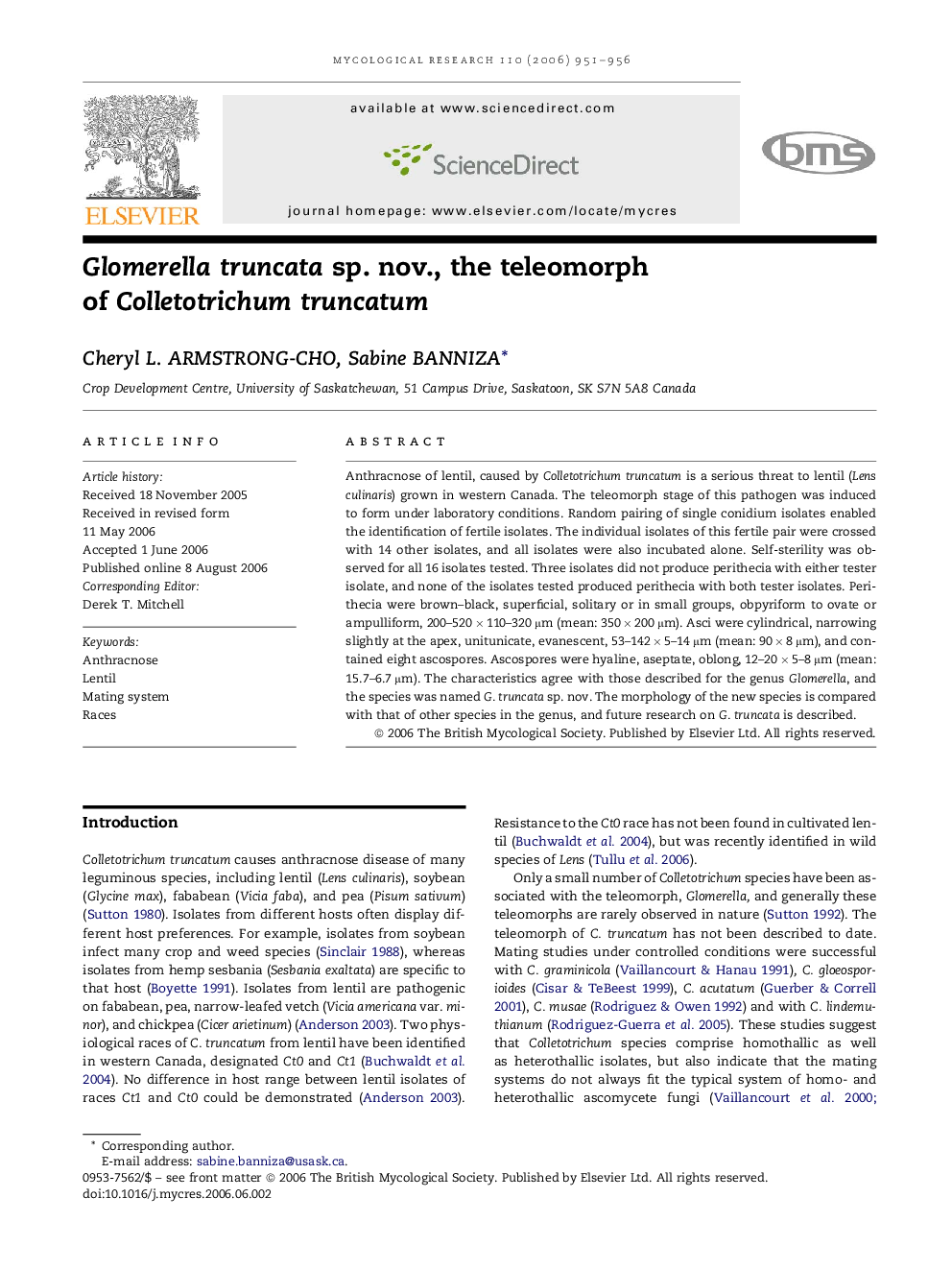| Article ID | Journal | Published Year | Pages | File Type |
|---|---|---|---|---|
| 4358130 | Mycological Research | 2006 | 6 Pages |
Anthracnose of lentil, caused by Colletotrichum truncatum is a serious threat to lentil (Lens culinaris) grown in western Canada. The teleomorph stage of this pathogen was induced to form under laboratory conditions. Random pairing of single conidium isolates enabled the identification of fertile isolates. The individual isolates of this fertile pair were crossed with 14 other isolates, and all isolates were also incubated alone. Self-sterility was observed for all 16 isolates tested. Three isolates did not produce perithecia with either tester isolate, and none of the isolates tested produced perithecia with both tester isolates. Perithecia were brown–black, superficial, solitary or in small groups, obpyriform to ovate or ampulliform, 200–520 × 110–320 μm (mean: 350 × 200 μm). Asci were cylindrical, narrowing slightly at the apex, unitunicate, evanescent, 53–142 × 5–14 μm (mean: 90 × 8 μm), and contained eight ascospores. Ascospores were hyaline, aseptate, oblong, 12–20 × 5–8 μm (mean: 15.7–6.7 μm). The characteristics agree with those described for the genus Glomerella, and the species was named G. truncata sp. nov. The morphology of the new species is compared with that of other species in the genus, and future research on G. truncata is described.
